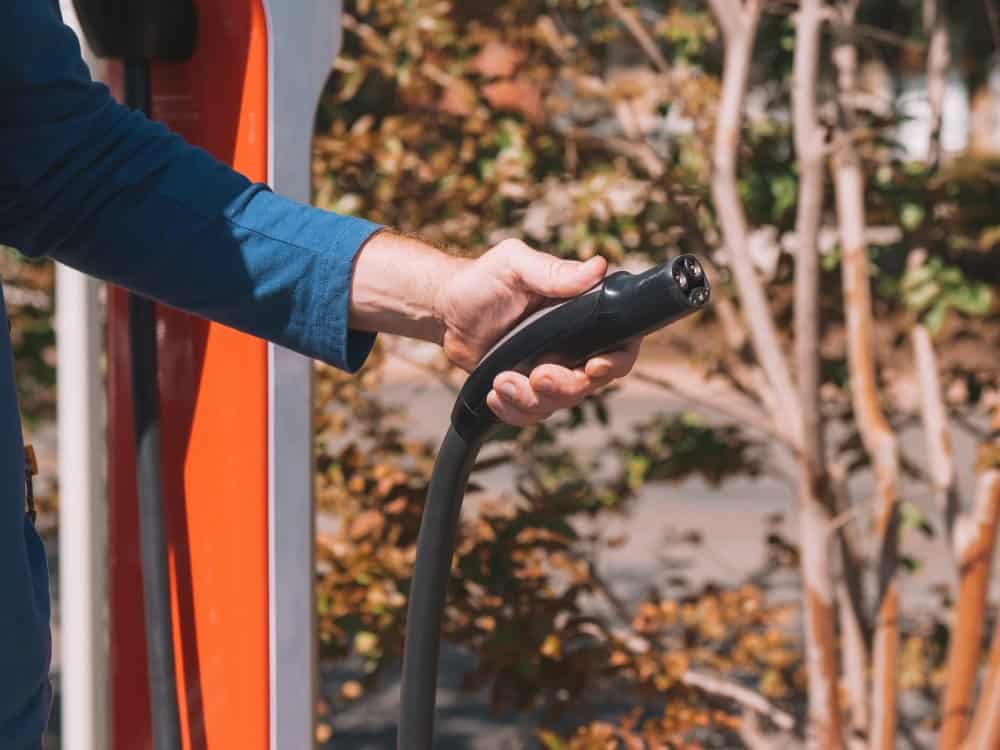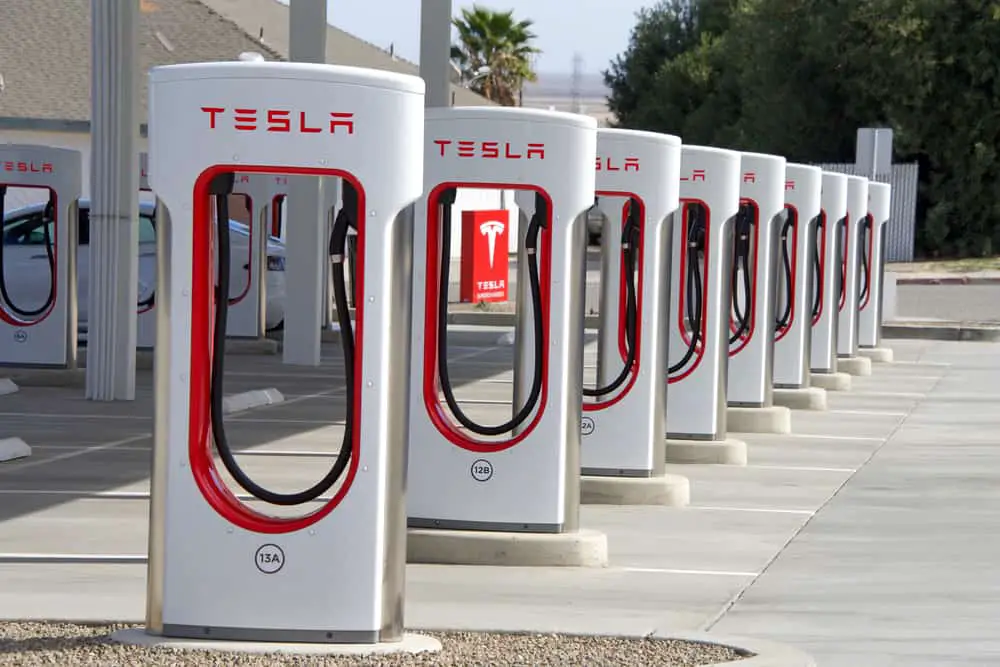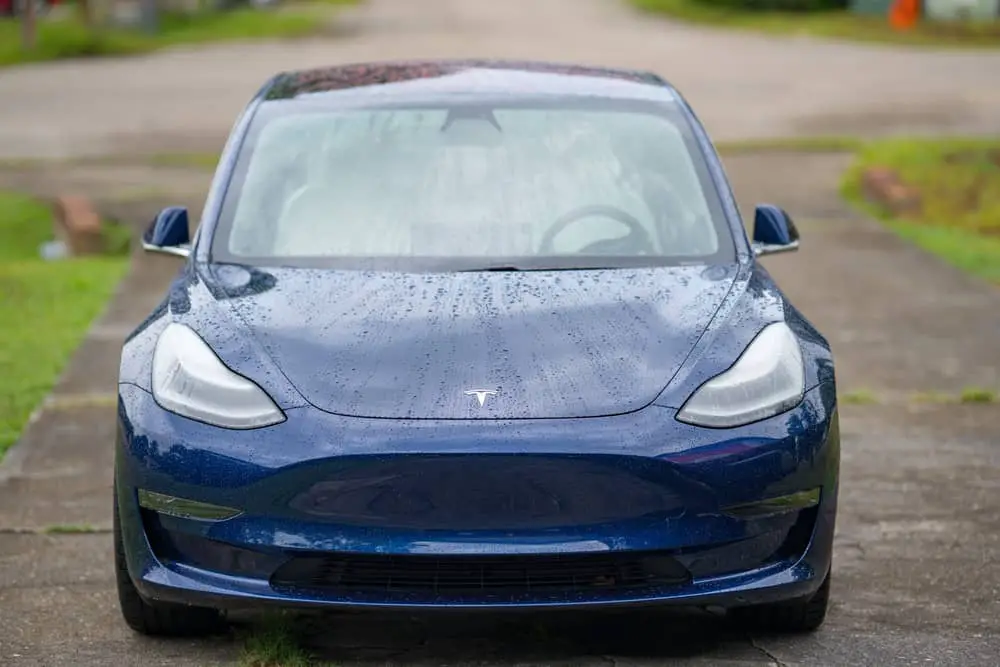Charging in the rain might seem risky, given that water and electricity are not known to mix well, but let’s dive into this topic and find out if it’s safe or not.
Tesla has designed its electric vehicles and charging equipment with safety and ease of use in mind. Rainy weather is a common occurrence around the world, and engineers have taken this into account by incorporating various safety features to ensure a smooth process.
These include sealed connectors, a multi-layered charging system, and built-in protective measures to prevent short circuits or other hazards.
Is It Safe to Charge a Tesla in the Rain?
Waterproof Charging Components
Tesla charging stations and components are designed to be waterproof and safe for use in various weather conditions, including rain. The connectors, cables, and charging units all have a high level of protection against water ingress, ensuring that it is safe to charge your Tesla, even in the rain.
Safety Features
Tesla has implemented numerous safety features in their charging systems to ensure the protection of both the vehicle and the user. These features include:
- Ground fault protection: This prevents any electrical faults caused by water from causing potential harm.
- Isolation monitoring: The charging system continuously monitors the electrical isolation between the charger and the vehicle, ensuring the charger is safe for use in wet conditions.
- Rubber seals and covers: Tesla charging components have rubber seals and covers that help keep water out and maintain the waterproof integrity of the system.
Precautions and Common Sense
While Tesla’s charging components are designed to be safe and waterproof, it is always essential to exercise common sense and take necessary precautions when handling electrical devices around water. Some tips to keep in mind include:
- Avoid using damaged charging cords or connectors.
- Ensure that the charging port on your vehicle is clean and free from debris before plugging in the connector.
- If you need to handle the charging connector or cable, make sure your hands and the surfaces are dry.
Charging a Tesla in Different Weather Conditions
Rainstorms and Electrical Storms
Charging a Tesla during rainstorms is generally safe and efficient. Tesla charging stations, like Superchargers, are designed with built-in safety features to protect your vehicle and the charging system during wet weather. It is important, however, to follow the proper charging procedures and not touch any electrical components while charging in the rain.
During electrical storms, it is still safe to charge your Tesla, but it is advised to take precautions such as parking close to a building to help minimize the risk of a lightning strike. Additionally, ensure that the charging station is properly grounded before plugging in your vehicle.
Snow and Freezing Rain
Charging your Tesla in snowy and freezing conditions is also possible and safe. Tesla vehicles are equipped with battery thermal management systems, which enable them to maintain optimal battery temperature for charging in cold temperatures. These systems make it easier to charge in colder climates.
Additionally, Tesla Supercharger stations have built-in heaters and sensors to prevent any freezing or damage to the charging equipment.
Tesla Charging Equipment and Accessories
Superchargers
Superchargers are Tesla’s fast-charging stations that can charge your Tesla in a fraction of the time it takes at home. They are strategically located around the world, providing convenience on long drives.
The charger easily connects to your vehicle’s charging port and initiates the charging process. It’s important to mention that charging at Superchargers can be safe even in the rain, as all components are designed to withstand wet conditions.
Mobile Connectors
The Tesla Mobile Connector is a portable charging cable that comes standard with all Tesla vehicles. It allows you to charge your electric car at home or on the go using various power sources. This connector comes with a 20-foot corded mobile connector and adapters for different power outlets.
The Mobile Connector is designed to be water-resistant and safe for use in the rain. When connecting or disconnecting the charger, ensure the charging port is clear of water or debris for optimal safety.
Wall Connectors
A Tesla Wall Connector is a high-power home charging station that offers faster charge speeds than the mobile connector. The Wall Connector needs to be professionally installed and hardwired into your home’s electrical system.
It comes with a separate charging cable and connector that plugs into your Tesla’s charging port. Wall Connectors are designed to handle outdoor exposure, including rain, and are built to be both water and weather resistant.
However, it’s important to exercise caution and ensure there is no water intrusion at the charging port when plugging or unplugging the vehicle in rainy conditions.
Home and Public Charging Stations
Safety Features at Charging Stations
Tesla charging stations are designed with various safety features to ensure the proper functioning of the charging process, even during unfavorable weather conditions.
Most electric vehicles (EVs), including Teslas, use a grounded system that prevents electrical current from flowing in unintended paths during charging. This eliminates the risk of electric shocks or short circuits, particularly while charging in the rain.
Safety features include:
- Ground Fault Circuit Interrupter (GFCI): This device detects any current imbalance that may occur during charging and instantly switches off the circuit, preventing electrical shock risks.
- Circuit Breakers: They offer built-in protection against the high currents that may result from situations like connecting or disconnecting the charger during extreme weather conditions.
- Insulated connectors: The connectors are well-insulated, ensuring that the user does not come into contact with any live electrical components.
Weatherproof Stations and Connectors
Both Tesla home charging stations and public Superchargers are designed to be weatherproof, allowing Tesla owners to charge their vehicles safely and effectively in various weather conditions, including rain. Some attributes of these weatherproof stations and connectors include:
- Weather-resistant enclosures: The charging stations are housed in durable, watertight enclosures which protect the internal components from exposure to water or other external elements.
- Sealed connectors: The connectors at Tesla charging stations have built-in seals that prevent the ingress of water and other contaminants, ensuring a secure and safe connection between the charging station and the vehicle.
- Drainage facilities: The design of the charging stations may also feature drainage facilities that divert rainwater away from critical components and reduce the risk of pooling water around the connector or EV.
Potential Issues and Precautions
Electrical Shock and Electrocution
Charging an electric car like a Tesla in the rain might raise concerns about electrical shock or electrocution.
However, Tesla’s charging equipment is designed with safety features to prevent electric shock. It’s crucial to use a dedicated charging station or an approved extension cord with proper grounding to minimize risks. Caution is necessary, especially during electrical storms, as high voltage electrical currents can pose potential hazards.
Water Damage and Short Circuits
When charging your Tesla in the rain, be mindful of potential water damage and short circuits. EVs, including Teslas, have built-in protection systems to shield electrical components, but it’s still important to take precautions.
- Always ensure the charging port is clean and dry before plugging or unplugging the charger
- Avoid charging where large amounts of water are pooling
- Use an approved and rated extension cord for outdoor use, if necessary
By following these basic guidelines, you can safely charge your Tesla in the rain and maintain the efficiency of your electrical system.
Tesla Models and Charging Compatibility
When considering charging a Tesla in the rain, it’s essential to know about the various Tesla models and their charging compatibility. Tesla currently offers four main models: the Model S, Model X, Model 3, and Model Y.
All of these cars have industry-leading electric ranges and come with the advanced charging systems necessary to keep these electric vehicles (EVs) on the road.
Charging a Tesla in the rain is a concern for many potential EV owners, but fortunately, Tesla designed its charging systems with weather considerations in mind. The charging ports on all Tesla models are designed to be weather-resistant, ensuring a safe and efficient charging process, even during a downpour.
Compatibility with various charging stations is another important aspect to consider. Tesla has its proprietary charging network, Superchargers, which provide high-speed charging capabilities across all Tesla models.
Nevertheless, Tesla drivers can also charge their vehicles at non-Tesla public charging stations using adapters. These chargers may have varying power outputs, but as long as they are in good working condition, charging a Tesla in the rain should not pose any significant safety risks.
Expert Recommendations and Real-Life Experiences
Tesla and other electric vehicle (EV) manufacturers have designed their charging systems with safety in mind. Engineers have incorporated several safety features to ensure that charging can be done without risk of injury or damage, even in wet weather conditions.
One such feature is that charging connectors are designed to prevent any direct contact between the user and live electrical components. Moreover, the materials used in the making of charging equipment are chosen to withstand moisture and adverse weather conditions.
In addition, the EV charging system monitors the connection during the charging process and is designed to shut off immediately if any irregularity or potential risk is detected. This built-in safeguard prevents potential charging issues and ensures safe operation.
Some hotels, with EV charging stations available for guests, have also installed canopy coverings to shield the charging area from rain. This not only enhances the convenience of charging but also provides an added level of comfort for drivers concerned about wet weather.
It’s important to follow the manufacturer’s guidelines regarding charging in all situations. Tesla’s recommendation is that its vehicles can be safely charged in the rain, provided the charging equipment has been properly installed and maintained.




